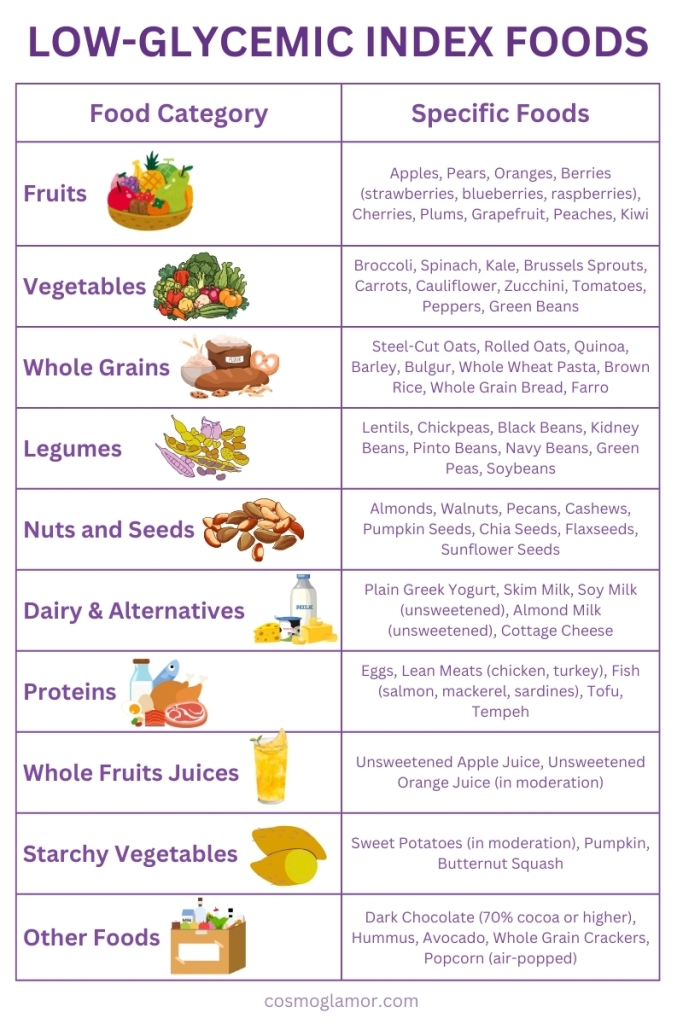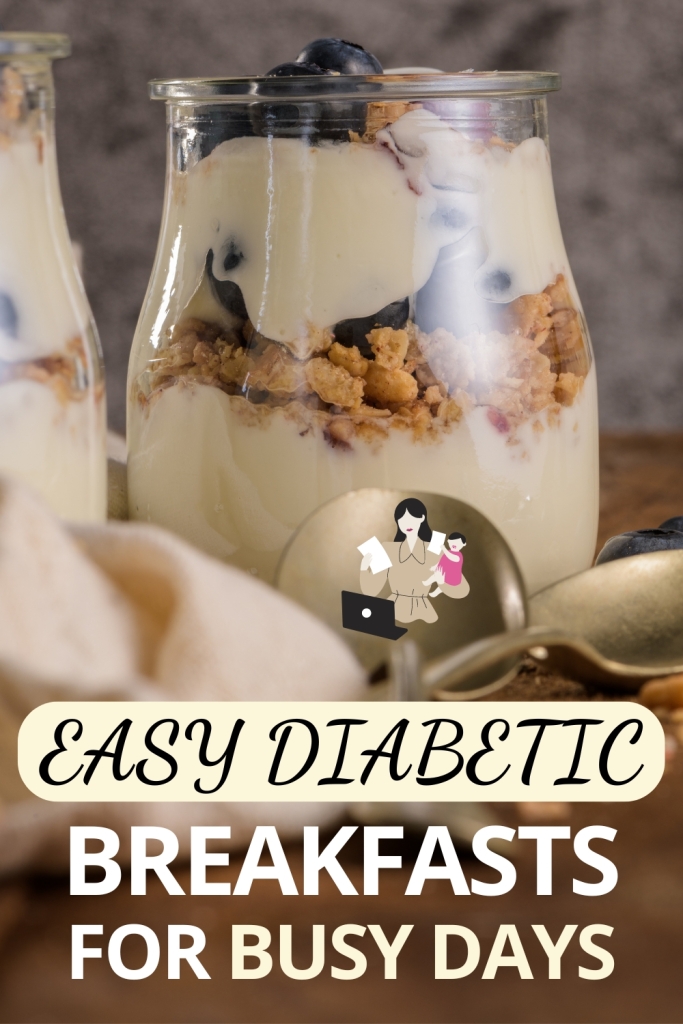A diagnosis of diabetes often feels like a life sentence of restrictions, especially when it comes to food. The first meal of the day, in particular, can be a source of confusion and frustration. However, managing diabetes doesn't have to mean sacrificing flavor or enjoyment. With a little creativity and planning, you can create delicious, satisfying, and blood sugar-friendly breakfasts that will set you up for a successful day. This article will guide you through a range of options, providing tips, recipes, and inspiration to transform your mornings.
Understanding the Importance of a Diabetic-Friendly Breakfast 
For people with diabetes, breakfast plays a critical role in maintaining stable blood sugar levels throughout the day. Skipping breakfast or choosing unhealthy options can lead to fluctuations in glucose levels, increasing the risk of complications. A well-balanced breakfast, on the other hand, provides sustained energy, improves insulin sensitivity, and helps manage weight – all crucial aspects of diabetes management.
The Role of Carbohydrates
Carbohydrates are the primary source of energy for the body, but they also have the most significant impact on blood sugar levels. For people with diabetes, it's essential to choose carbohydrates wisely. Focus on complex carbohydrates found in whole grains, fruits, and vegetables, as they are digested more slowly and cause a gradual rise in blood sugar. Avoid refined carbohydrates like white bread, pastries, and sugary cereals, which can lead to rapid spikes in glucose levels.
The Power of Protein
Protein is a vital nutrient that helps regulate blood sugar levels by slowing down the absorption of glucose. Including protein in your breakfast can help prevent blood sugar spikes and keep you feeling full and satisfied for longer. Excellent sources of protein include eggs, Greek yogurt, nuts, seeds, and lean meats.
The Benefits of Healthy Fats
Healthy fats, such as those found in avocados, nuts, seeds, and olive oil, also contribute to blood sugar control. They slow down the digestion of carbohydrates, leading to a more gradual increase in glucose levels. Additionally, healthy fats provide essential nutrients and promote satiety, reducing the risk of overeating later in the day.
Building a Balanced Diabetic-Friendly Breakfast
A balanced breakfast for people with diabetes should include a combination of complex carbohydrates, protein, and healthy fats. This combination helps stabilize blood sugar levels, provide sustained energy, and promote satiety.
Focus on Fiber
Fiber is a type of carbohydrate that the body cannot digest. It helps regulate blood sugar levels by slowing down the absorption of glucose. Aim to include at least 5-10 grams of fiber in your breakfast. Excellent sources of fiber include whole-grain bread, oatmeal, fruits, vegetables, and nuts.
Choose Low-Glycemic Index Foods
The glycemic index (GI) is a valuable tool for people with diabetes, as it ranks foods based on how quickly they raise blood sugar levels. Foods with a low GI (55 or less) are digested slowly, leading to a gradual increase in blood sugar. Medium GI foods (56-69) have a moderate impact, while high GI foods (70 or more) cause a rapid spike in blood sugar. By choosing predominantly low GI foods, you can help manage your blood sugar levels more effectively.
- Low GI foods: Most fruits and vegetables (berries, apples, pears, broccoli, carrots), whole grains (oatmeal, quinoa, brown rice), legumes (lentils, chickpeas), nuts, and seeds.
- Medium GI foods: Whole wheat bread, brown rice, couscous, sweet potato.
- High GI foods: White bread, white rice, potatoes, sugary drinks, processed foods.
Remember that the GI is just one factor to consider when choosing foods. Portion size, fiber content, and the overall balance of your meal also play a role in blood sugar control.

Watch Your Portions
Even healthy foods can raise blood sugar levels if consumed in large quantities. Pay attention to portion sizes and use measuring cups or a food scale to ensure you're not overeating. A registered dietitian or certified diabetes educator can help you determine appropriate portion sizes based on your individual needs and goals.
14 Diabetic-Friendly Breakfast Recipes
1. Overnight Chia Seed Pudding: This simple and delicious make-ahead option is perfect for busy mornings. Chia seeds are packed with fiber, which helps slow down the absorption of sugar into the bloodstream. Combine them with your favorite milk alternative (almond, oat, or coconut milk) and a touch of sweetener (maple syrup or stevia) for a creamy and satisfying breakfast. Add some berries or nuts for extra flavor and nutrition.
2. Savory Oatmeal with Eggs and Spinach: Oatmeal is a classic breakfast staple that can be easily adapted for a diabetic diet. Opt for steel-cut or rolled oats over instant varieties, as they have a lower glycemic index. Cook them with water or unsweetened milk alternative and add a poached or fried egg for protein, along with some sautéed spinach for extra fiber and nutrients. Season with herbs and spices for a flavorful twist.
3. Greek Yogurt Parfait with Berries and Nuts: Greek yogurt is an excellent source of protein and calcium, and its tangy flavor pairs perfectly with fresh berries and nuts. Choose plain, unsweetened Greek yogurt and layer it with mixed berries (strawberries, blueberries, raspberries) and a handful of chopped nuts (almonds, walnuts, pecans). This simple yet nutritious breakfast is a great way to start your day.
4. Avocado Toast with Smoked Salmon and Everything Bagel Seasoning: This trendy breakfast is both delicious and diabetes-friendly. The healthy fats in avocado help regulate blood sugar levels, while the protein in smoked salmon keeps you feeling full and satisfied. Choose a whole-grain bread or toast and top it with mashed avocado, smoked salmon, and a sprinkle of everything bagel seasoning for a delightful combination of flavors and textures.
5. Vegetable Omelet: Omelets are a versatile and nutritious breakfast option that can be easily customized to your liking. Fill yours with a variety of colorful vegetables like bell peppers, onions, mushrooms, and spinach for added fiber and nutrients. The protein in eggs helps stabilize blood sugar levels and keeps you energized throughout the morning.
6. Lentil and Vegetable Curry with Brown Rice: This savory and hearty breakfast is packed with protein, fiber, and complex carbohydrates. The lentils and brown rice provide sustained energy, while the vegetables add essential nutrients and antioxidants. This dish can be prepared in advance and reheated for a quick and convenient morning meal.
7. Sweet Potato Toast with Almond Butter and Banana: A creative and nutritious twist on traditional toast, sweet potato toast offers a good source of fiber and complex carbohydrates. Topped with almond butter for healthy fats and protein, and sliced banana for natural sweetness and potassium, this breakfast is both satisfying and delicious.
8. Chickpea Flour Pancakes: These pancakes, also known as “socca,” are a gluten-free and protein-rich alternative to traditional pancakes. Made with chickpea flour, they are naturally lower in carbohydrates and higher in fiber. Top them with fresh fruit and a drizzle of honey or maple syrup for a delightful breakfast treat.
9. Breakfast Burrito Bowl: This customizable bowl offers a balance of protein, fiber, and complex carbohydrates. Combine scrambled eggs or tofu scramble with black beans, brown rice, salsa, avocado, and a sprinkle of cheese for a hearty and flavorful breakfast.
10. Buckwheat Porridge with Berries and Seeds: Buckwheat is a gluten-free grain that’s rich in fiber and protein, making it a great option for a diabetic breakfast. Cook it with water or unsweetened milk alternative and top with fresh or frozen berries, a sprinkle of seeds (chia, flax, or pumpkin), and a drizzle of honey or maple syrup for natural sweetness.
11. Smoked Salmon and Cream Cheese Pinwheels: These elegant and flavorful pinwheels are a perfect grab-and-go breakfast or brunch option. Spread a thin layer of cream cheese on whole-wheat tortillas, top with smoked salmon and thinly sliced cucumber or bell pepper. Roll up tightly and slice into bite-sized pieces.
12.Breakfast Frittata:This versatile dish is packed with protein and vegetables, making it a satisfying and balanced breakfast option. Whisk eggs with your favorite vegetables (such as spinach, mushrooms, bell peppers, and onions) and bake in a preheated oven until set.
13. Black Bean and Corn Salad with Avocado: This refreshing and flavorful salad is a great choice for a light breakfast or brunch. Combine black beans, corn, chopped bell peppers, red onion, and avocado. Drizzle with a lime vinaigrette for a zesty and nutritious meal.
14. Spinach and Feta Egg White Wraps: These wraps are a light and nutritious breakfast option. Scramble egg whites with spinach and feta cheese, and wrap them in whole-wheat tortillas. You can add other vegetables like mushrooms or bell peppers for extra flavor and nutrients.
Tips for Success
- Plan Ahead: Planning your breakfasts in advance can help you make healthier choices and avoid impulsive decisions. Take some time each week to plan your meals and prepare ingredients ahead of time, such as chopping vegetables or cooking a batch of quinoa.
- Read Food Labels: Pay close attention to food labels, especially when choosing packaged foods. Look for products that are low in added sugar, saturated fat, and sodium. Choose whole-grain options whenever possible and be mindful of portion sizes.
- Monitor Your Blood Sugar: Regularly monitoring your blood sugar levels can help you understand how different foods affect your body. This information can guide your breakfast choices and help you make adjustments as needed.
- Consult a Registered Dietitian: A registered dietitian or certified diabetes educator can provide personalized guidance on creating a diabetes-friendly meal plan, including breakfast options. They can also help you understand carbohydrate counting and other strategies for managing your blood sugar levels.
- Don't Be Afraid to Experiment: There are countless delicious and satisfying breakfast options that are compatible with a diabetes-friendly diet. Don't be afraid to experiment with different ingredients and recipes to find what you enjoy most.
Conclusion
Living with diabetes doesn't have to mean sacrificing enjoyable breakfasts. By focusing on balanced meals that include complex carbohydrates, protein, and healthy fats, you can start your day with stable blood sugar levels and sustained energy. Remember to plan, read food labels, monitor your blood sugar, and consult a registered dietitian for personalized guidance. With a little creativity and effort, you can create delicious, satisfying, and blood sugar-friendly breakfasts that will set you up for a successful day.
Remember: It's essential to consult with your healthcare professional or a registered dietitian to create a personalized meal plan that suits your specific needs and health conditions.
References
- Skipping Breakfast Is Associated With Impaired Glucose Tolerance and Elevated Fasting Insulin in Adults With Type 2 Diabetes
- The Role of Protein in Blood Glucose Control and Type 2 Diabetes
- Effect of a low-glycemic index or a high-cereal fiber diet on type 2 diabetes: a randomized trial
- Dietary Fat Intake and Risk of Type 2 Diabetes in Women
- Dietary fiber and type 2 diabetes: a systematic review and meta-analysis of randomized controlled trials









